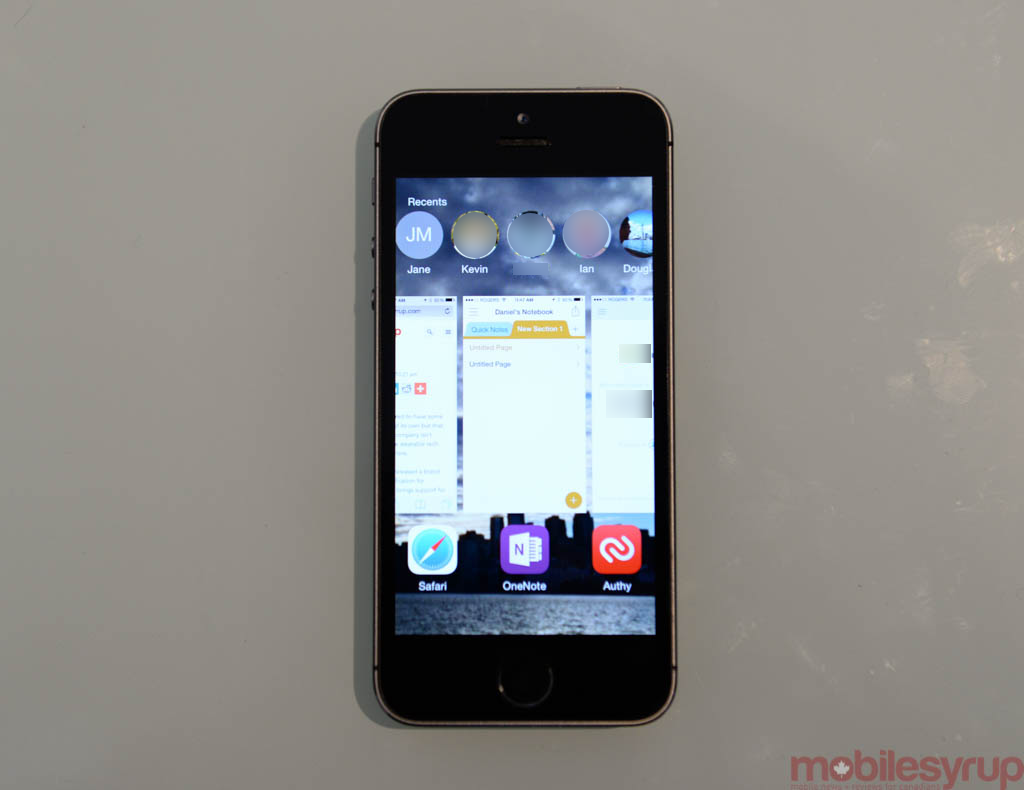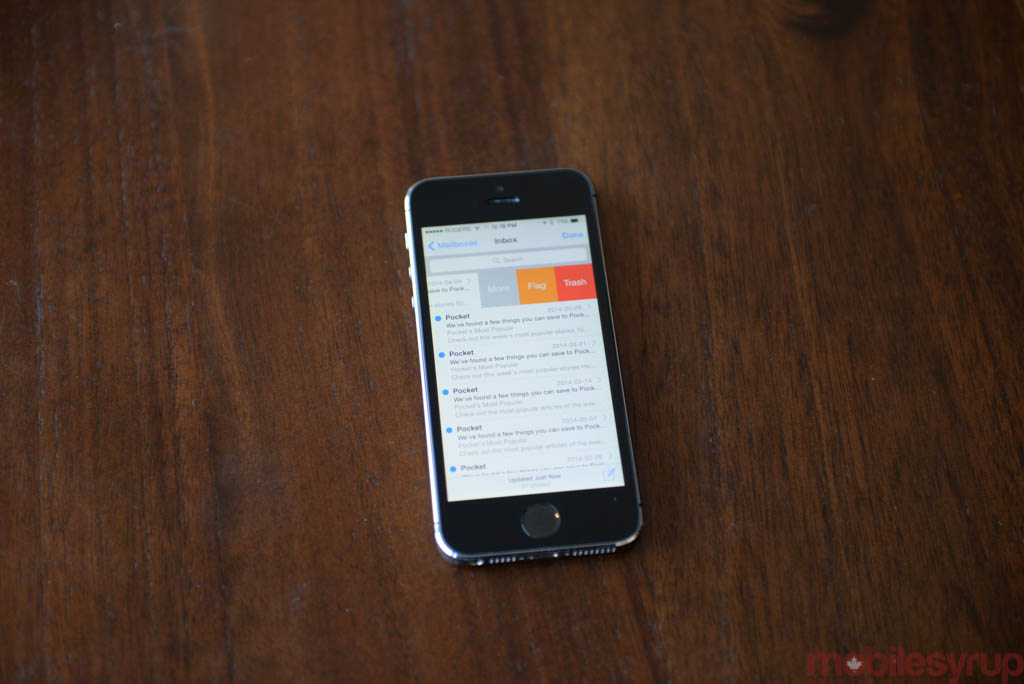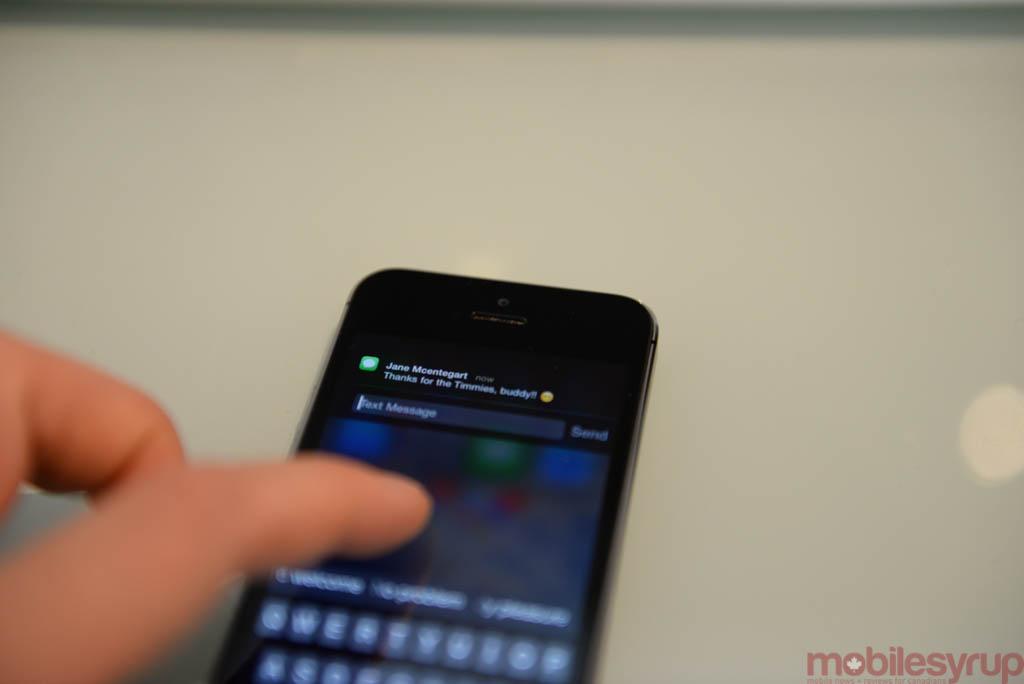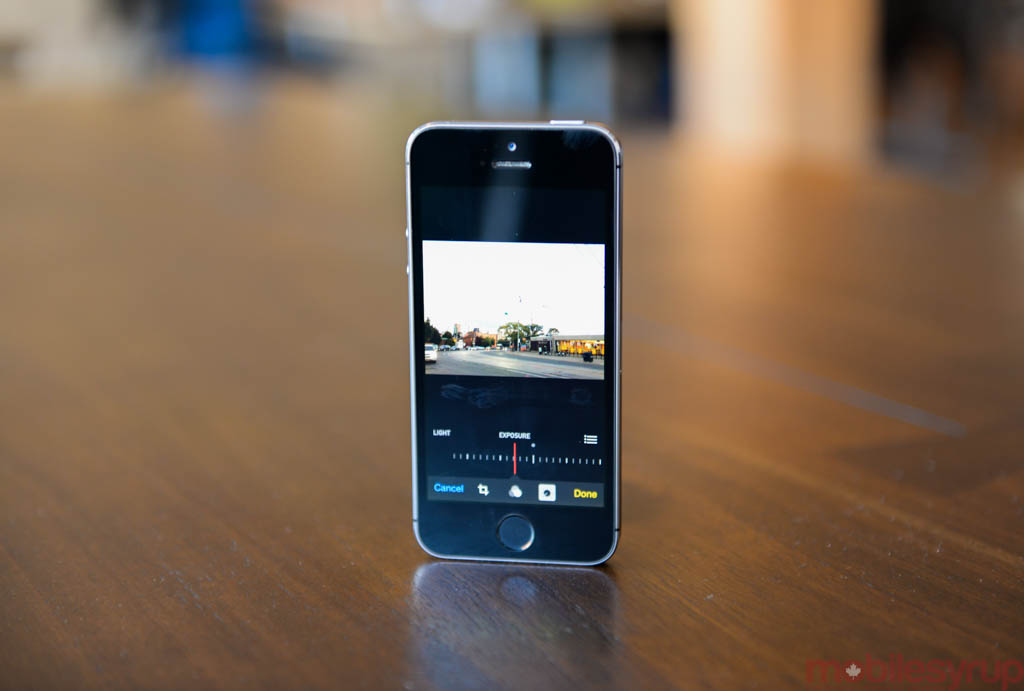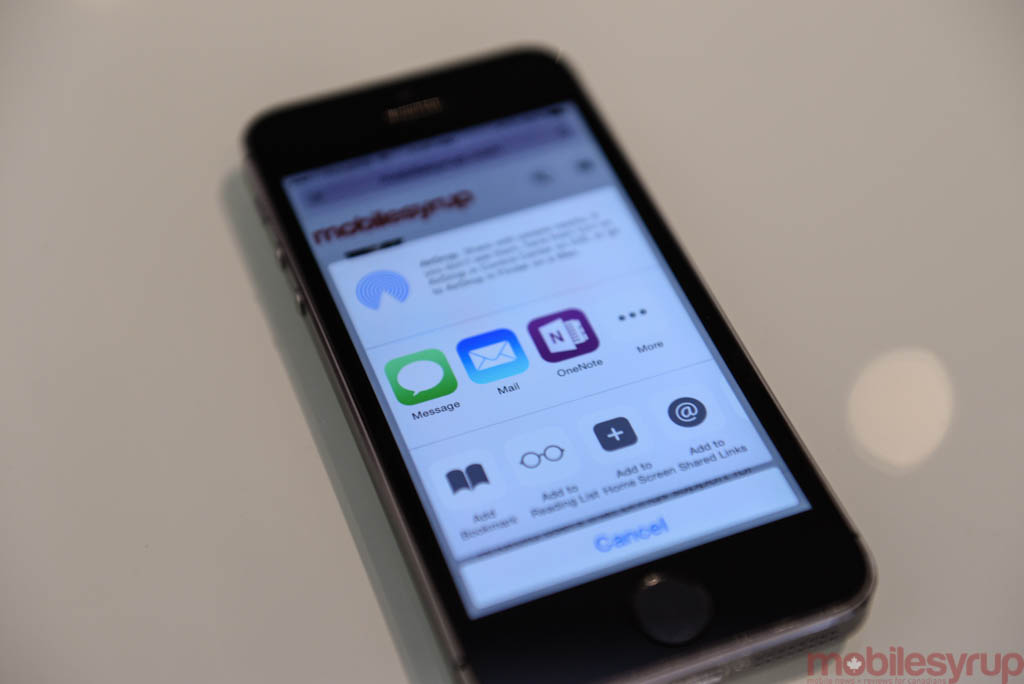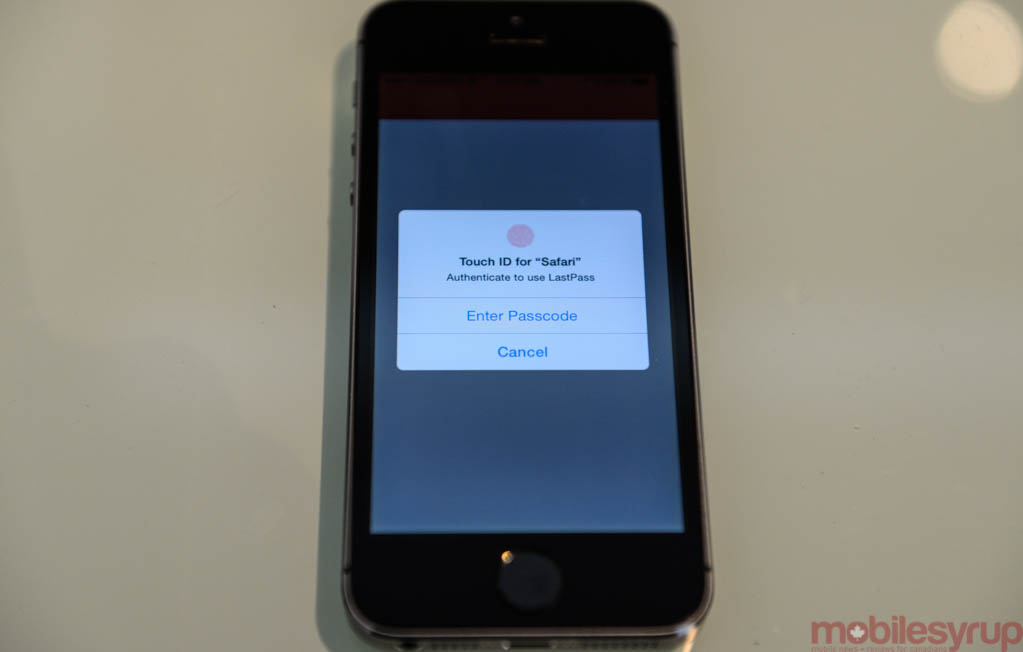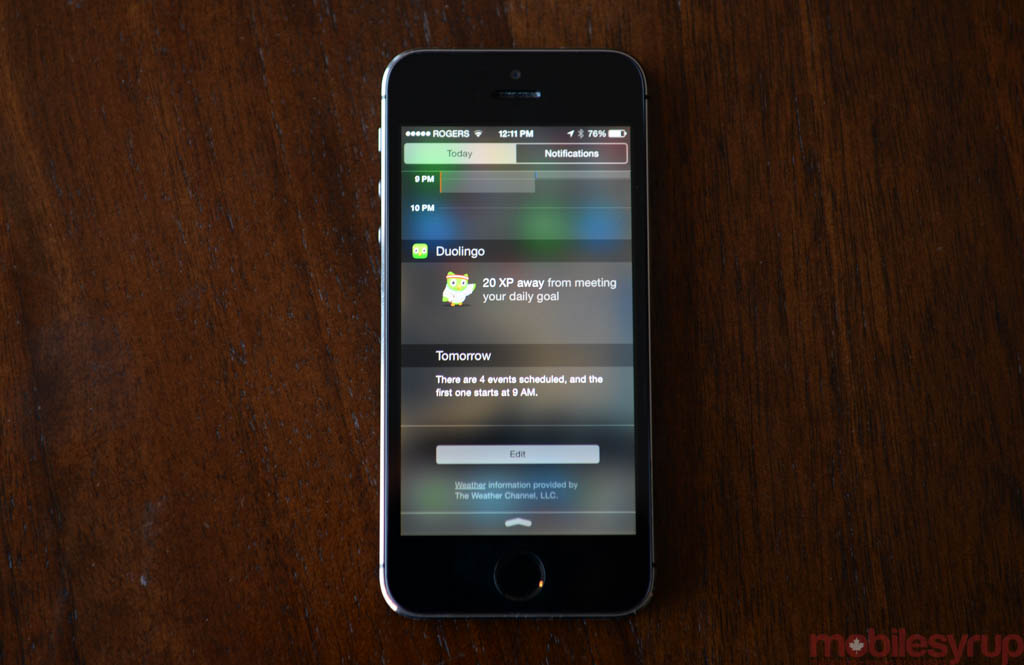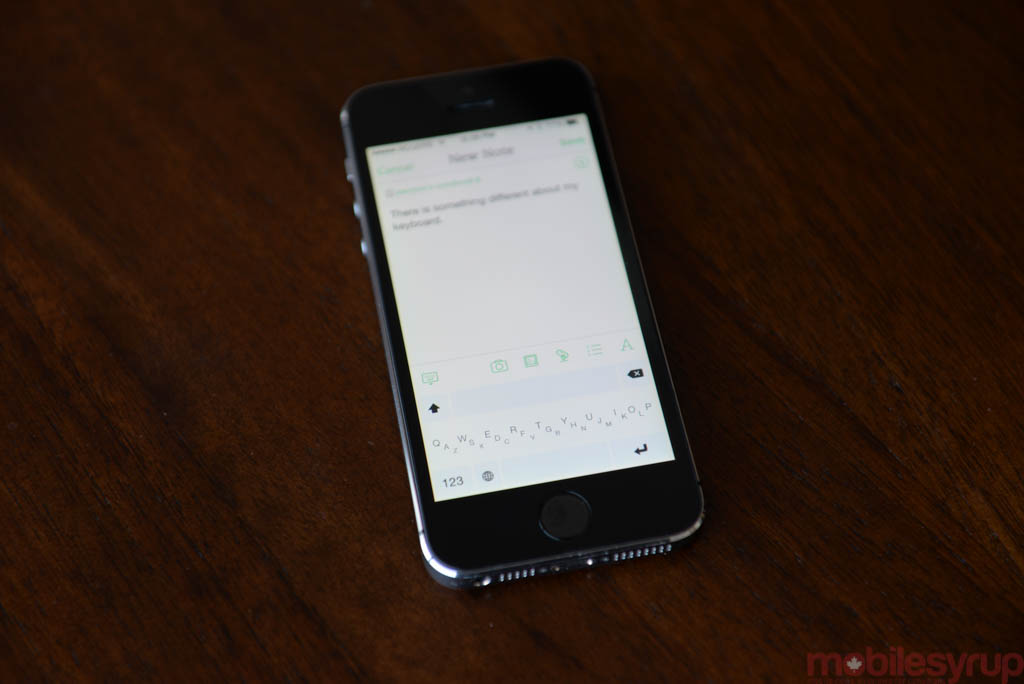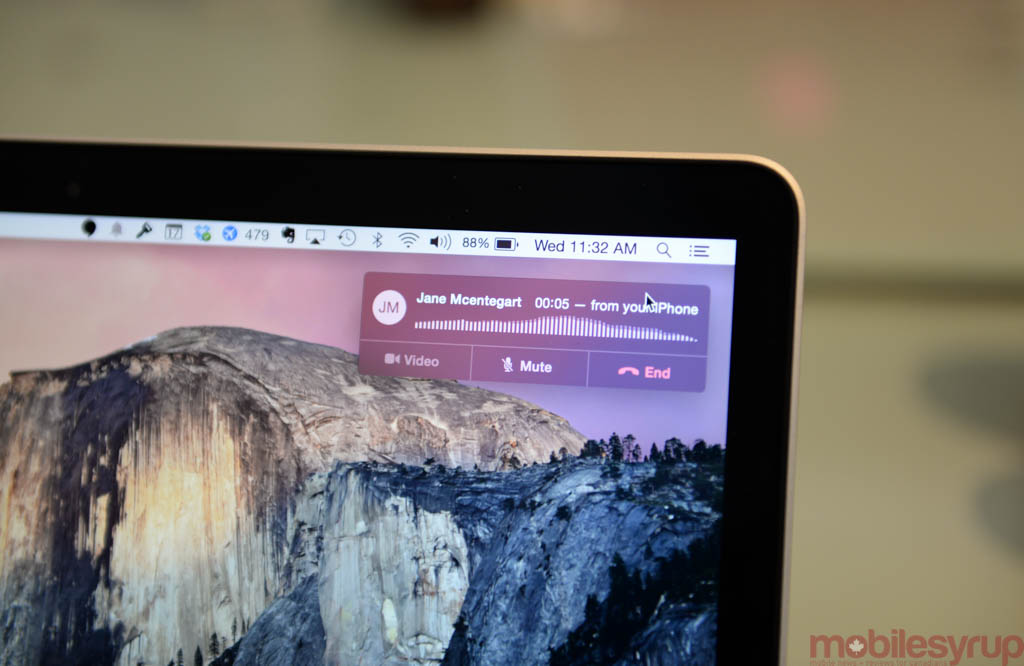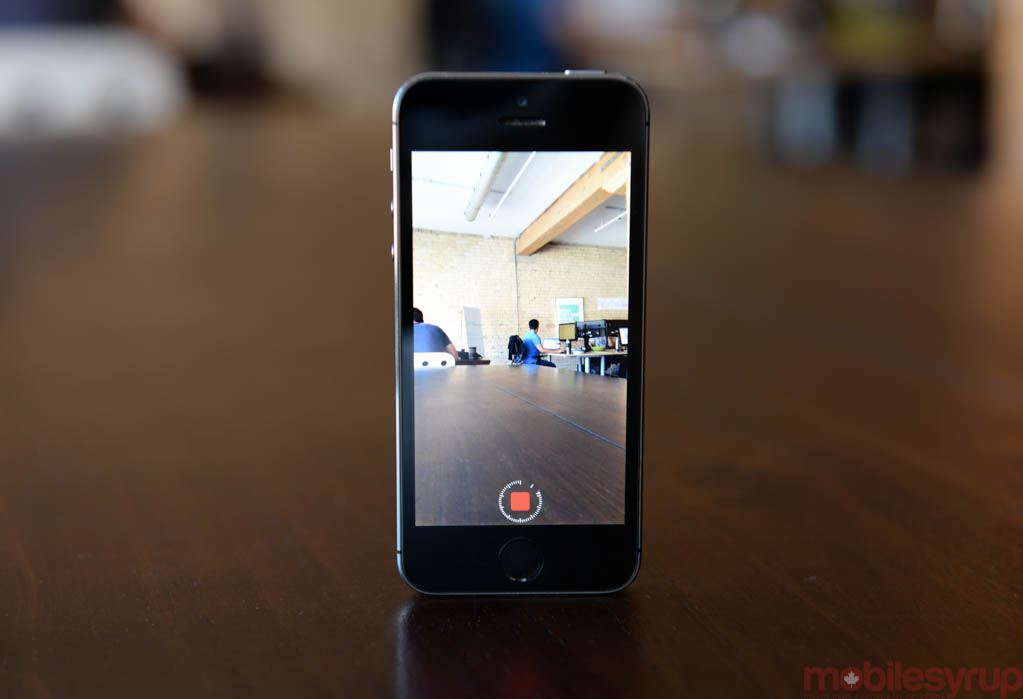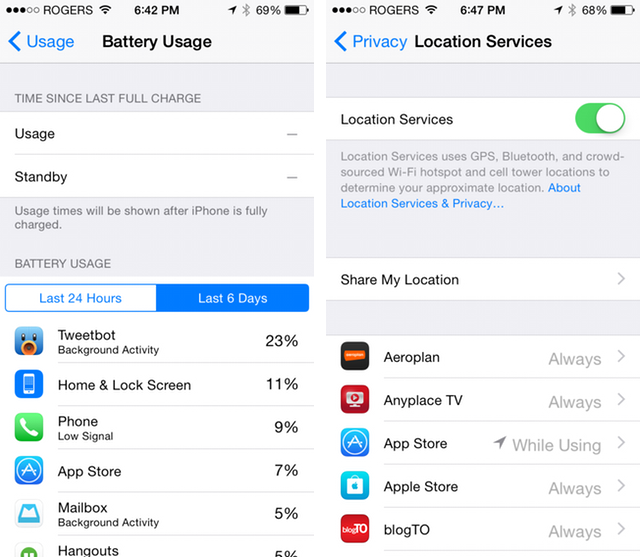
iOS 8 is here, and while it’s not the comprehensive visual update that iOS 7 was over its predecessor, Apple has garnished its mobile operating system with enough new functionality to keep developers busy for years.
And that’s really the point: consumers will see improvements to messages, photos, mail, the keyboard and more, but the true weight of iOS 8 won’t be seen for months yet.
On the surface, Apple is catching up to Android in many ways: the addition of extensions, and by association widgets and custom actions, do away with much of the austerity that iOS has, for years, been built upon, but in its place is a robust set of features that developers are already taking advantage of.
As usual, we’re going to be highlighting our favourite features, and deferring to some of the other incredible pieces of writing already available on the subject.
Introduction
iOS 8 is all about refinement. As Apple took its time to bring copy-paste, background processes and push notifications to iOS in years past, so too did it meander in its implementation of what I like to call passive actions.
Last year saw a complete overhaul of iOS’s design language, both for users and developers. Users were met with flat icons, subtle gradients, ample translucency and a swipe-friendly interface that was aided by new approach to building apps. Developers could stack app layers like a sandwich, removing the top layer with a swipe from the left side of the screen. Unbeknownst to us at the time, this system-wide swipe gesture was readying users and developers for what came next — larger iPhones.
Such a modal switch took time to grow accustomed to: months after the debut of iOS 7, apps still loaded with skeumorphic textures and legacy navigation.
For the most part, iOS 8 benefits from the maturity of Apple’s app ecosystem: developers have a year of practice under their belts, and are more nimble when it comes to custom layouts. Apple’s newest iOS builds on the base introduced in 2013, and ensures that both iPhone and iPad users remain happy, while enticing Android users with a host of new customizations.
Android users have been able to action notifications, use third-party keyboards and communicate between apps using ‘intents’ for some time, but iOS ensures security above all else.
That said, iOS 8 differs from the latest version of Android in many ways. A new Camera API allows developers to tap into manual controls like shutter speed, ISO and exposure; expanded Touch ID support replaces passwords with fingerprints in apps like LastPass and 1Password; and HealthKit, HomeKit and CloudKit make it easier for apps to tap into pieces of external technologies.
Improvements to Core Apps
iOS may have a robust third-party app ecosystem, but users are still limited to the Messages app for texts and iMessages. Similarly, the Mail app, despite alternatives, continues to be an important part of many users’ iOS workflow.
Mail has been beefed up with time-saving gestures similar to those found in Gmail, Mailbox, Cloudmagic and others. It’s now possible to quickly flag an email for follow-up or action it in specific ways depending on the mail backend. Similarly, drafts are now treated as objects (finally!) allowing users to return to in-progress opuses by swiping up from the bottom of the screen.
Messages are now actionable from Action Center, ending the one need to open a separate app just to issue a quick reply and eliminating the one remaining need to jailbreak.
Other apps can plug into the notifications API, so expect the ability to respond to WhatsApp messages, Facebook posts and Snapchats any day now.
Camera improvements
The camera remains remarkably simple to use in iOS 8, but Apple has wisely opened up a number of optional user editing enhancements in addition to a new API that brings the iPhone even closer to a point-and-shoot.
There’s a new timelapse feature that, with a stabilizing element like a tripod, creates a looping video of quickly-moving objects. It’s now also possible to manually adjust the exposure levels of a scene in real time before the shutter is pressed, something that will ensure the right lighting even without HDR.
Apple’s gallery app is considerably more powerful in iOS 8, with editing functions divided into three categories: Light, Color and B&W. The former offers exposure, brightness, contrast movement, typically only seen in third-party camera apps.
While the focus is still on simplicity, being able to edit a photo in the gallery before using an extension to upload it to a service like Instagram or EyeEm removes a step in the workflow, and ensures that no unnecessary processing is done before uploading it to the cloud. It also ensures that photos look their best when sent to backup services like Google+ or Dropbox.
Extensions
Extensions are actually divided into several categories, but all of them are instrumental in making iOS 8 considerably more useful than previous versions.
Apps can plug into either the Share intent, similar to that ubiquitous icon found in most Android apps, or they can sit as add-ons in the app itself.
For example, as seen above, Microsoft OneNote can now be plugged into apps, like Safari, that contain a share menu. While this was an oft-underused element of iOS 7, owing to the fact that Mail and Messages were the only two destinations for this content, web pages (and other content) can now be saved to third-party apps. Say you want you save a long editorial to Pocket, or clip a portion of a research paper to OneNote or Evernote — this is all possible with a couple of taps.
Also possible, and incredibly useful, is the ability to use Touch ID-powered apps inside Safari or apps that plug into an extension.
Take, for instance, 1Password, an indispensable app that was updated to support Touch ID and extensions. In Safari or one of the over 100 third-party apps that support it, users can authenticate themselves using the 1Password extension, removing the need to remember one’s username and password, and eliminating the need to exit the app to load 1Password itself. It’s a seamless process that overcomes iOS’s underdeveloped multitasking capabilities without sacrificing security.
What’s so important about sharing and extensions is that security continues to be of utmost importance: the sandbox between two processes still exists, so one’s encrypted credentials stored in 1Password are never actually transmitted to the active app, at least not in a way that the app can discern anything useful. The lynchpin here is Touch ID, so iPhone users prior to 5s are still going to be required to use an alphanumeric password in place of a fingerprint, but the process is still considerably faster than having to switch between apps manually.
The extensions infrastructure also comprises of widgets, another piece of functionality seemingly borrowed from Android.
Because iOS doesn’t allow anything other than app icons to be placed on the home screen, developers have access to the newly-implemented “Today” portion of Notification Center.
Widgets can become unwieldy after a time, but the ability to quickly check New York Times headlines or add a snippet of text to Evernote is practical and useful, if not exactly innovative. The widget system, like many of iOS 8’s features, are constrained by Apple’s APIs, so reproducing an entire app within the Notification Center is not allowed, but a summation of that app — referencing one’s Duolingo experience, for instance — is more than encouraged.
Third-party keyboards
Technically part of the extensions infrastructure, third-party keyboards get their own section because they are of such importance to the function of the iPhone and iOS 8 as a whole.
From SwiftKey to Minuum, the ability to switch out Apple’s (considerably improved for iOS 8) keyboard for something more esoteric — think Minuum’s one-dimensional, suggestion-happy solution — absolutely alters the way one works on an iPhone (or iPad). Just being able to swipe from one letter to another on the smaller iPhone 5s screen is revelatory, and singlehandedly makes iOS 8 worth the upgrade.
We covered all the launch day iOS 8-optimized keyboards, so take a gander if you’re so inclined.
Continuity & Handoff
While the fruits of Continuity and its sub-featured, Handoff, won’t be felt for a couple more months — not until OS X Yosemite has been released — even today one can see its potential.
As long as you’re living in an Apple world — two or more of the iPhone, iPad, or Mac — you’ll be able to share phone calls, texts, links and more between environments. Think AirDrop, or Pushbullet, but smarter.
Handoff is the mechanism that, with no active setup on the user’s part, allows an iPhone to communicate with an iPad or OS X machine to answer phone calls and receive or reply to text messages. Calls (and soon texts) can also be initiated on the iPad or Mac through the iPhone, meaning that, unlike an iMessage the user will see it coming from a phone number.
Continuity brandishes its cloud weaponry to share Safari links, Mail drafts and iWork documents between devices, too. It’s unclear whether Apple will open this portion up to third-party apps but, again, the solution is optimized for those who live entirely in Apple’s world — for better or worse.
The whole idea behind Continuity is to add value to the users described above. Apple sells hardware — that’s how it makes its money — so incentivizing people to buy a Mac because it works better with an iPhone is just one more step in that revenue story.
Everything else
iOS launch days are a barrage of app updates and promises of future app updates. Already we’ve seen dozens of app developers, from Pocket to Evernote to The New York Times and more, plug into Apple’s various new APIs to deliver a better (and occasionally more obtuse) app experience.
The dual benefit and curse of the way Apple enables these new features means that, without a bit of education, many of them may go unnoticed. Sure, people will see the suggestion boxes above the QuickType keyboard, and they may accidentally swipe down on an incoming text message to unveil a reply box, but other than changes to the default font and addition of frequently-contacted people in the multitasking menu, iOS 8 looks and feels very much like its predecessor.
Despite the lack of overt UI modifications, iOS 8 immediately feels faster on the iPhone 5s than it did last year’s software. Small animation judders, such as pulling down the Spotlight box on the home screen, are now seamless; searches, despite more information to index, happen considerably more quickly.
Even Touch ID, a sore point throughout my time with iOS 7, appears to respond with more consistency more often.
That’s not to say there are no problems with iOS 8. I still find it infuriating that there is no way to clear all notifications in one tap. And while Siri can now be activated by voice by chiming, “Hey Siri” from the home screen, the iDevice has to be plugged in to do so; in many cases, I missed the passive intelligence of Google Now’s cross-device integration.
It’s also troublesome that while it’s now possible to tell which apps are consuming battery, security features still come across as heavy-handed. One must manually switch off an app’s access to Location Services, Background App Refresh and Notifications. Such granular control comes with the move to a more robust operating system, but iOS 8 runs the risk of being too switch-heavy for its own good. Although it is great that Apple now makes it possible to limit an app’s access to location to only when it is open.
Of concern, too, is the ability to transition over to iCloud Drive before the release of OS X Yosemite, as doing so will make one’s documents inaccessible on machines running Mavericks or earlier. It’s a temporary problem, but one that Apple should have addressed with a bit more alacrity.
Conclusion
There’s a lot to love about iOS 8, and it’s a huge improvement over iOS 7. We haven’t touched on HomeKit, HealthKit or Metal, all of which will show their value in the months to come, but they too have the potential to augment the iPhone’s already-central place in one’s pocket or bag by taking advantage of a growing ecosystem of internet-connected hardware found in the home, and on one’s person.
In the meantime, iOS 8 is a big download, and may not fit on smaller-storage iPhones or iPads without a bit of finessing. But if you’re an iPhone or iPad user on the fence about whether to upgrade, make sure to back up — both locally and to iCloud — and give it a go.
You’ll be pleasantly surprised.
MobileSyrup may earn a commission from purchases made via our links, which helps fund the journalism we provide free on our website. These links do not influence our editorial content. Support us here.

